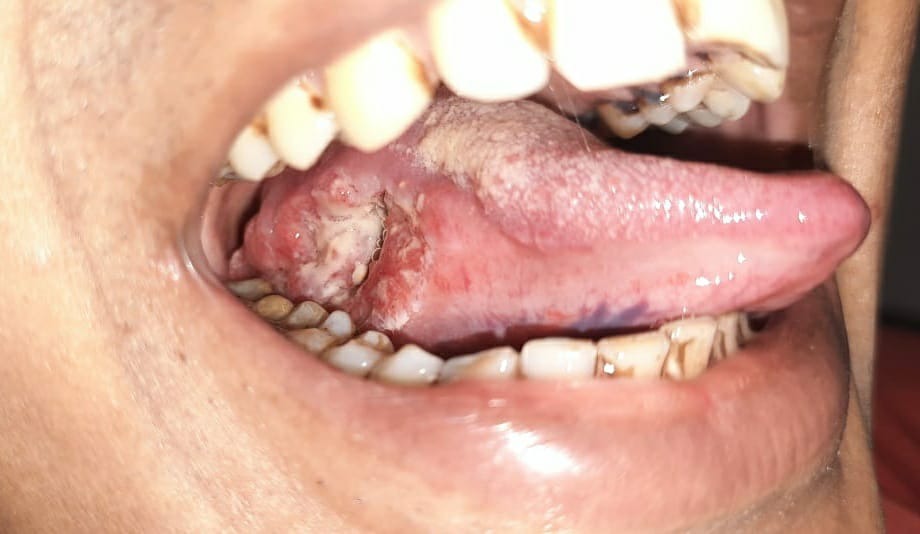
Oral cancer, also known as mouth cancer is a type of head and neck cancer recognised by any cancerous tissue growth located in the oral cavity.This type of cancer most commonly involves the tongue. It may also occur on the floor of the mouth, cheek lining, gingiva (gums), lips, or palate (roof of the mouth). Most oral cancers look very similar under the microscope and are called squamous cell carcinoma; the oral cavity where growth takes place includes the following
It may arise as a primary lesion originating in any of the tissues in the mouth, by metastasis from a distant site of origin, or by extension from a neighbouring anatomic structure, such as the nasal cavity. Alternatively, the oral cancers may originate in any of the tissues of the mouth, and may be of varied histologic types: teratoma, adenocarcinoma derived from a major or minor salivary gland, lymphoma from tonsillar or other lymphoid tissue, or melanoma from the pigment-producing cells of the oral mucosa.Oral or mouth cancer most commonly involves the tongue. It may also occur on the floor of the mouth, cheek lining, gingiva (gums), lips, or palate (roof of the mouth). Most oral cancers look very similar under the microscope and are called squamous cell carcinoma.
Not all tumors in the mouth are cancer. Some are benign (not cancer), and some are precancerous, meaning they may become cancer.
Surgery is the removal of the tumor and some surrounding healthy tissue, known as a margin, during an operation. An important goal of the surgery is the complete removal of the tumor with "negative margins." Negative margins means that there is no trace of cancer in the margin's healthy tissue. Surgeons are often able to tell in the operating room if all of the tumor has been removed.
Sometimes surgery is followed by radiation therapy, therapies using medication, or both. Depending on the location, stage, grade, and other features of the cancer, some people may need more than 1 operation to remove the cancer and to help restore the appearance and function of the affected tissues.
The most common surgical procedures for the removal of oral or oropharyngeal cancer include:
Primary tumor surgery. The tumor and a margin of healthy tissue around it are removed to decrease the chance that any cancerous cells will be left behind. The tumor may be removed through the mouth or through an incision in the neck. A mandibulotomy, in which the jawbone is split to allow the surgeon to reach the tumor, may also be required.
GLOSSECTOMY. This is the partial or total removal of the tongue.
MANDIBULECTOMY. If the tumor has entered a jawbone but not spread into the bone, then a piece of the jawbone or the whole jawbone will be removed. If there is evidence of destruction of the jawbone on an x-ray, then the entire bone may need to be removed.
MAXILLECTOMY. This surgery removes part or all of the hard palate, which is the bony roof of the mouth. Prostheses (an artificial replacement), or more recently, the use of flaps of soft tissue with and without bone can be placed to fill gaps created during this operation.
NECK DISSECTION. Cancer of the oral cavity or oropharynx often spreads to lymph nodes in the neck. Preventing the cancer from spreading to the lymph nodes is an important goal of treatment. It may be necessary to remove some or all of these lymph nodes using a surgical procedure called a neck dissection, even if the lymph nodes show no evidence of cancer when examined (see Stages and Grades). A neck dissection may be followed by radiation therapy or a combination of chemotherapy and radiation therapy, called chemoradiation, to make sure there is no cancer remaining in the lymph nodes. Sometimes, for oropharyngeal cancer, a neck dissection will be recommended after radiation therapy or chemoradiation. If a neck dissection is not possible, radiation therapy may be used instead. See "Radiation therapy," below, for more details on this type of treatment.